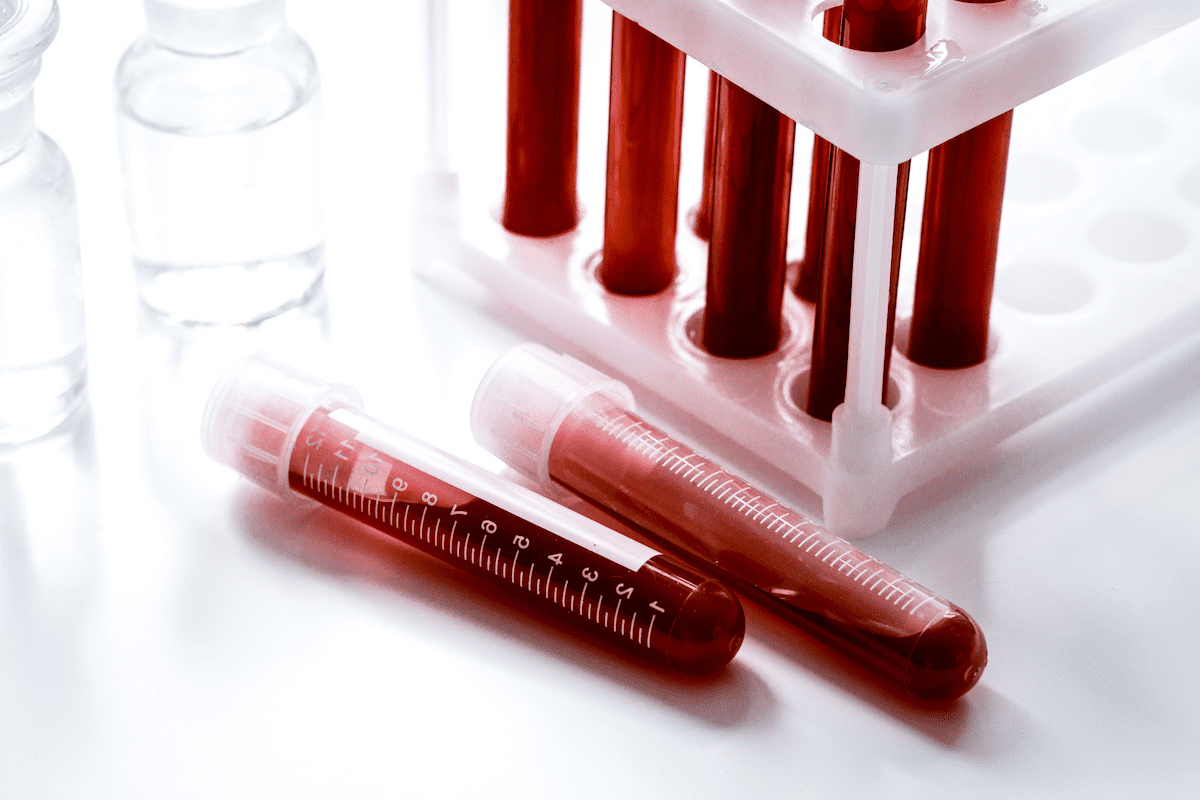Last Updated on November 26, 2025 by Bilal Hasdemir

Aortic aneurysms are a serious condition that can be deadly if not treated. Abdominal aortic aneurysm (AAA) happens in the abdominal aorta. Medical technology has greatly improved its treatment.
Stent placement is now a top choice for treating aortic aneurysms. It’s a less invasive option compared to traditional surgery. This method has shown to reduce recovery time and improve patient results.
As aortic aneurysms become more common, knowing about stent placement is key. This article will cover the main points of this treatment. It will give insights into its benefits and what patients can expect.
Key Takeaways
- Understanding the risks associated with abdominal aortic aneurysms.
- The role of stent placement in treating aortic aneurysms.
- Benefits of minimally invasive stent placement procedures.
- What to expect during the recovery process.
- Importance of follow-up care after stent placement.
Understanding Abdominal Aortic Aneurysms (AAA)

An abdominal aortic aneurysm (AAA) happens when the aorta, the main artery, gets too big in the belly. This makes the aorta swell up, usually to more than 1.5 times its normal size.
What is an Abdominal Aortic Aneurysm?
An AAA is very dangerous if it bursts. The aorta is the biggest artery, and swelling can cause serious bleeding inside. AAA is often without symptoms until it’s very serious, so regular check-ups are key.
Risk Factors and Prevalence
Many things can make AAA more likely, including:
- Advanced age: The risk goes up after 65.
- Smoking: It harms the artery walls.
- Atherosclerosis: Plaque buildup weakens the aorta.
- Family history: Having a family history increases risk.
- Gender: Men are more likely to get AAA than women.
AAA is common in older people, more in men and smokers.
Symptoms and Detection Methods
AAA usually doesn’t show symptoms until it’s big or bursts. Symptoms might be:
- Pain in the belly or back
- A mass in the belly that can be felt
- Shock or low blood pressure if it bursts
There are ways to find AAA early, including:
- Ultrasound: Uses sound waves to see the aorta.
- CT scans: Gives detailed images of the aorta.
- MRI: Shows detailed images without radiation.
Finding AAA early is very important. It helps manage and treat it, which can stop it from bursting and improve health.
Traditional vs. Endovascular Treatment Approaches

Managing AAA means choosing between open surgery and endovascular repair. This section explains each method’s benefits and drawbacks.
Open Surgical Repair
Open surgery involves cutting the abdomen to reach the aorta. It’s more invasive, leading to a longer recovery. Patients often stay in the hospital for days and may take months to fully heal.
This method is effective but risky, mainly for those with health problems. The surgery uses general anesthesia and replaces the aorta with a synthetic graft.
Endovascular Aneurysm Repair (EVAR)
EVAR is a less invasive option for treating AAA. It uses a stent graft inserted through the groin arteries. This method leads to shorter hospital stays and faster recovery times compared to open surgery.
EVAR is best for high-risk patients due to age or health issues. It reinforces the aorta, preventing the aneurysm from growing.
Comparing Recovery Times and Outcomes
Open surgery and EVAR have different recovery times and outcomes:
- Recovery Time: EVAR has a much shorter recovery period, with many patients back to normal in weeks.
- Complication Rates: EVAR has lower complication rates, which is a big plus for high-risk patients.
- Long-term Outcomes: Both methods have long-term considerations. EVAR requires regular checks to ensure the stent graft works properly.
In conclusion, the choice between open surgery and EVAR depends on several factors. These include the patient’s health, the aneurysm’s size, and personal preferences. Knowing the differences between these treatments is key to making the right choice.
Key Fact 1: The Rising Prevalence of Abdominal Stent Procedures
Abdominal stent grafts are becoming more common. They offer a less invasive way to treat aortic aneurysms. This change is due to new technology and changes in who needs treatment.
Statistical Trends in AAA Treatment
More people are getting abdominal stent procedures for aortic aneurysms. Market research shows that by 2025, these stent grafts will make up 57 percent of the aortic stent market. This growth is because more people are getting diagnosed with AAA and want less invasive treatments.
Key statistics include:
- More people are choosing endovascular aneurysm repair (EVAR) procedures.
- Thanks to better screening, more people are being diagnosed with AAA.
- Patients are preferring treatments that are less invasive.
Factors Driving the Shift to Stent Grafts
Several things are making stent grafts more popular for treating AAA. These include:
- Technological advancements: New designs and materials make stent grafts safer and more effective.
- Minimally invasive benefits: Putting in stent grafts is less invasive than open surgery. This means patients recover faster and have fewer complications.
- Increasing patient eligibility: Better imaging and technology mean more people can get endovascular repair.
Projected Market Growth Through 2025
The market for abdominal stent grafts is expected to grow a lot by 2025. This growth is due to:
- More people being diagnosed with AAA.
- New technology in stent grafts.
- More people being eligible for endovascular repair.
As more people want less invasive treatments for AAA, the demand for abdominal stent grafts will increase. This will be driven by new technology and the need for these treatments.
Key Fact 2: How Endovascular Stent Placement Works
The endovascular stent placement procedure is a big step forward in treating abdominal aortic aneurysms. It’s a minimally invasive method that has changed vascular surgery. It gives patients a safer and more effective choice than traditional open surgery.
The Step-by-Step Procedure
First, the patient gets local anesthesia to numb the area. Then, a small incision is made in the groin to reach the femoral artery. A catheter is guided through the artery to the aneurysm using imaging.
Once there, a stent graft is deployed to strengthen the aorta. This ensures blood flows through the graft, not into the aneurysm sac.
Minimally Invasive Advantages
Endovascular stent placement is minimally invasive. Unlike open surgery, it only needs small incisions. This means less tissue damage and trauma to the patient.
Patients usually have less post-operative pain and can get back to normal activities faster.
Reduced Complication Rates vs. Open Surgery
Endovascular stent placement has lower complication rates than open surgery. The minimally invasive method reduces blood loss and avoids aortic cross-clamping. Studies show it lowers morbidity and mortality rates, making it safer for many patients.
Key Fact 3: Types of Aortic Stent Grafts and Materials
Medical technology has made big strides in creating different aortic stent grafts. These advancements help treat abdominal aortic aneurysms better. They focus on making the devices last longer, cut down on problems, and help more people.
Polymer-Sealing Grafts
Polymer-sealing grafts are a big leap in aortic stent grafts. They use a special seal to keep the stent in place better. This reduces the chance of leaks. A study found that these grafts cut down on leaks a lot.
“The polymer-sealing technology represents a significant advancement in stent graft design, improving patient outcomes in endovascular aneurysm repair.”
This tech is great for people with tricky aortic shapes.
Branched and Fenestrated Designs
Branched and fenestrated designs open up new ways to treat tough aortic aneurysms. They help keep blood flowing to important organs. For example, a study shows how these designs help with hard-to-treat cases.
Material Innovations Improving Durability
New materials have made aortic stent grafts much more durable. Today’s grafts can withstand wear and tear better. This means they work well for longer, helping patients more.
The ongoing improvement in aorta stents and stent graft aorta tech is promising. It will likely make treating abdominal aortic aneurysms even better, giving patients safer and more effective options.
Key Fact 4: Advanced Imaging in Aortic Stent Placement
Advanced imaging is key for placing aortic stents accurately. These technologies add precision, making the procedure successful.
Pre-Procedural Planning with CT and MRI
CT and MRI are vital before placing aortic stents. They give detailed info needed for choosing the right stent size and type.
CT scans show high-resolution images. They help see the aneurysm’s size, shape, and location. MRI offers great soft tissue detail without radiation.
Intraoperative Fluoroscopic Guidance
Fluoroscopic guidance is key during the procedure. It lets doctors see the stent graft being placed in real-time, ensuring it’s in the right spot.
“Fluoroscopic guidance is indispensable for navigating the complexities of aortic stent placement, enabling precise deployment and minimizing the risk of complications.”
Post-Procedure Surveillance Protocols
After the procedure, doctors watch the stent graft and the aneurysm closely. They use CT or MRI for follow-ups to catch any issues early.
Advanced imaging has greatly improved aortic stent placement results. As technology gets better, these procedures will become even safer and more precise.
Key Fact 5: Long-Term Outcomes of Abdominal Stent Treatment
Studies show that abdominal stent treatment works well over time. It’s seen as a reliable option. Many clinical studies have looked at its effects over long periods.
Five-Year Durability Statistics
Research shows that EVAR with abdominal stent grafts works well for five years. A study in the Journal of Vascular Surgery found high rates of success. Patients treated with EVAR had a low need for further interventions.
Durability Statistics:
| Treatment Outcome | 1-Year Rate (%) | 3-Year Rate (%) | 5-Year Rate (%) |
| Freedom from Reintervention | 95 | 85 | 80 |
| Survival Rate | 98 | 90 | 85 |
| Aneurysm-related Mortality | 1 | 2 | 3 |
Mortality and Morbidity Improvements
Abdominal stent grafts lead to fewer deaths and complications than open surgery. EVAR has lower death rates and fewer problems right after surgery.
There’s also a big drop in complications. This means better health and a better life for patients.
Quality of Life Considerations
Abdominal stent treatment not only saves lives but also makes life better for patients. It cuts down on recovery time and lowers the chance of problems. This lets patients get back to their usual lives sooner.
The success of abdominal stent treatment shows it’s a good choice for treating abdominal aortic aneurysms. As technology gets better, we can expect even better results for patients.
Key Fact 6: Expanding Patient Eligibility for Stent in Aneurysm Treatment
New stent technology has opened up treatment options for more patients. This includes those with complex body shapes and health issues. Thanks to new materials and designs, vascular surgeons can now help a wider range of people.
Treating Complex Anatomies
Before, treating complex body shapes was hard or not possible. But now, fenestrated and branched stent grafts make it possible. These stents fit perfectly into each patient’s body, giving more treatment options.
- Fenestrated stents keep blood flowing to important organs.
- Branched stents seal securely in complex aortic shapes.
- Advanced imaging helps place stents accurately.
Age and Comorbidity Considerations
Age and health issues play big roles in who can get treatment. Older people or those with many health problems face big risks with traditional surgery. But, endovascular stent placement is a safer, less invasive option.
This method reduces risks and helps patients recover faster. So, more people can get the help they need.
| Patient Group | Traditional Open Surgery Risks | Endovascular Stent Placement Benefits |
| Older Patients | Higher risk of complications, longer recovery | Minimally invasive, faster recovery |
| Patients with Comorbidities | Increased surgical risk due to health conditions | Reduced risk of complications, less invasive |
Personalized Treatment Decision-Making
More people can get stent treatment thanks to personalized treatment decision-making. New imaging tech like CT and MRI helps plan treatments. This way, doctors can tailor care to each patient’s needs.
Healthcare teams look at age, health, and body shape to decide the best treatment. This approach helps more people and improves results.
Key Fact 7: The Economics of AAA Stent Procedures
AAA stent procedures involve a mix of costs, outcomes, and market trends. As AAA cases grow, it’s key to grasp the economic side of these treatments.
Cost-Effectiveness Analysis
Looking at the cost-effectiveness of AAA stent procedures is vital. Research shows that, despite the high start-up costs, these procedures save money. This is because they lead to shorter hospital stays and quicker recovery times than traditional surgery.
Breaking down the costs of AAA stent procedures, we see the stent graft, procedural costs, and care after. Here’s a table with the main cost points:
| Cost Component | Average Cost |
| Stent Graft | $15,000 – $20,000 |
| Procedural Costs | $5,000 – $10,000 |
| Follow-up Care | $1,000 – $3,000 |
Insurance Coverage and Accessibility
Insurance coverage is a big factor in who can get AAA stent procedures. Most insurers cover it, but how much can vary. It’s important for patients to talk to their insurers about what’s covered.
Global Market Trends and Regional Variations
The global market for AAA stent procedures is set to expand. This is due to more cases and better technology. But, there are differences in the market based on where you are.
In the United States, a strong healthcare system and quick adoption of new tech drive the market. But, in emerging markets, growth comes from better healthcare and more awareness of treatment options.
Patient Experience During and After Abdominal Stent Placement
Getting an abdominal stent involves several steps, from getting ready to aftercare. Knowing these steps can make patients feel more at ease and ready for the procedure.
Pre-Procedure Preparation
Before the procedure, patients go through tests and checks to make sure they’re good candidates. This includes:
- Imaging tests: CT scans or MRI to see the aorta and the aneurysm.
- Blood tests: To check for any health issues that might affect the procedure or recovery.
- Medical history review: To look for any risks or complications.
Patients are also told about pre-procedure preparations. This includes fasting, adjusting medications, and making plans for getting home after the procedure.
The Day of Procedure Experience
On the day of the procedure, patients will:
- Go to the hospital or treatment center, where they’ll get ready for the procedure.
- Get local anesthesia or conscious sedation to reduce pain.
- Have the stent placed, guided by advanced imaging.
The procedure usually takes a few hours. After that, patients are watched closely to make sure there are no problems right away.
Recovery Timeline and Follow-up Care
The recovery timeline can vary, but most patients will:
- Stay in the hospital for a few days to be watched.
- Start getting back to normal activities over the next weeks.
- Go to follow-up appointments to check on the stent and healing.
Follow-up care is key for the stent’s long-term success. This includes regular tests and visits with healthcare providers.
Understanding what happens during and after abdominal stent placement helps patients prepare better. This can lead to better outcomes for them.
Conclusion: The Future of Aortic Aneurysm Treatment
Abdominal aortic aneurysms (AAA) treatment has seen big changes with endovascular stent grafts. These grafts have made a big difference, making treatment less invasive than old surgeries.
New stent grafts and treatments are on the horizon. They promise better results and fewer problems for patients. This trend will keep improving, thanks to more research and better technology.
Stent grafts will likely play a bigger role in treating AAAs. They are key to making treatment better and safer. This will lead to better lives for those with aortic aneurysms.
FAQ
What is an abdominal aortic aneurysm (AAA) stent graft?
An AAA stent graft is a device used to treat aortic aneurysms. It reinforces the weakened aorta with a fabric-covered stent. This prevents further expansion and rupture.
How is an aortic stent placement procedure performed?
The procedure starts with small incisions in the groin. These access the femoral arteries. The stent graft is then guided to the aneurysm site under imaging.
Once there, it is deployed to exclude the aneurysm from blood flow.
What are the benefits of endovascular aneurysm repair (EVAR) with a stent graft?
EVAR with a stent graft is minimally invasive. It has a shorter recovery time and lower risk of complications. It also causes less pain compared to traditional surgery.
What are the risks associated with aortic stent graft placement?
Risks include endoleak, stent migration, and graft failure. There’s also a chance of continued aneurysm growth or rupture. General risks like bleeding and infection are also possible.
How is the success of an aortic stent graft monitored?
Success is monitored with regular imaging studies, like CT scans. These check for endoleaks, stent migration, or other complications. They also assess the aneurysm’s size and stability.
Can anyone with an abdominal aortic aneurysm be treated with a stent graft?
Not everyone can get a stent graft. It depends on the aneurysm’s size and location, the patient’s health, and the aorta’s anatomy.
What is the recovery time like after aortic stent graft placement?
Recovery is shorter than with open surgery. Many patients can return to normal activities in a few weeks. Recovery times vary based on individual factors.
Are there different types of stent grafts available for AAA treatment?
Yes, there are various stent grafts. They include different designs and materials. The choice depends on the aneurysm and the patient’s anatomy.
How do advancements in imaging technology impact aortic stent placement?
New imaging tech improves stent placement. It allows for better planning, guidance during the procedure, and monitoring after. This leads to better outcomes.
What are the long-term outcomes for patients treated with an aortic stent graft?
Long-term outcomes are generally good. Patients show high durability and low complication rates. Ongoing surveillance is needed to monitor for late complications.
References
- Fernandes, J. F. E. (2020). Abdominal aortic aneurysms – how to treat in today’s practice. European Society of Cardiology Journal of Cardiology Practice. https://www.escardio.org/Journals/E-Journal-of-Cardiology-Practice/Volume-18/abdominal-aortic-aneurysms-how-to-treat-in-today-s-practice






